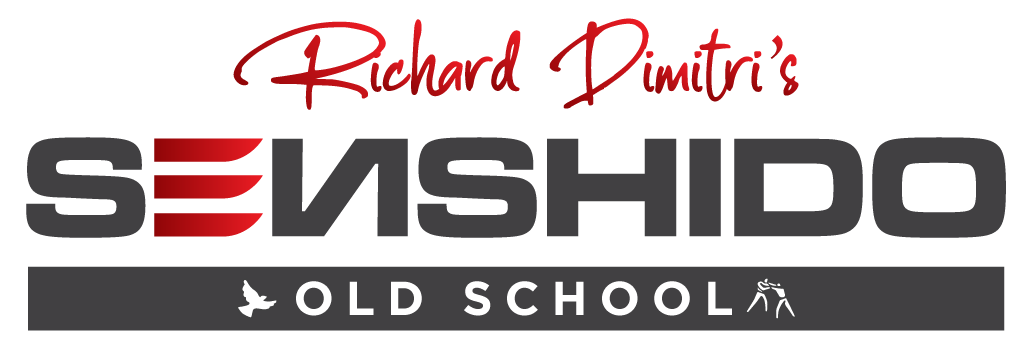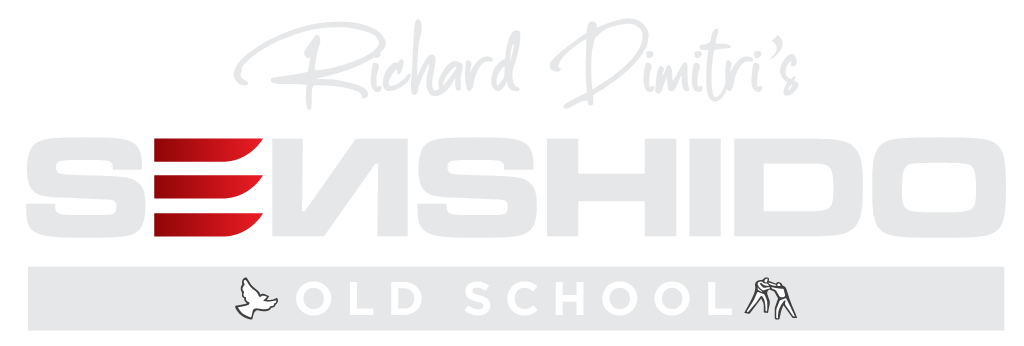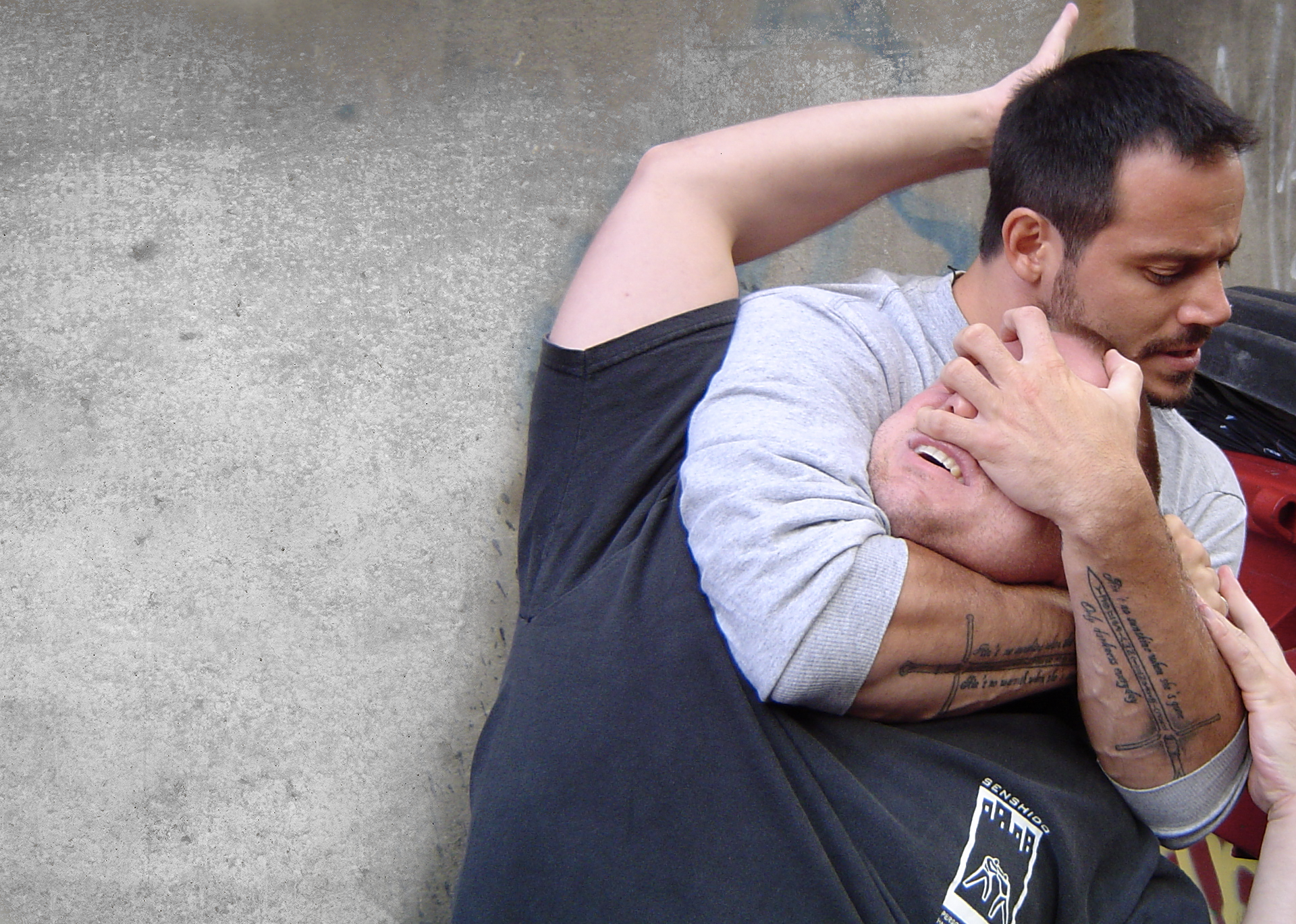Martial artists in general still don’t fundamentally understand the concept and extreme importance of pre contact psychology. It’s amazing to see forum after forum; message board after message board, all that is being discussed is ‘techniques’. Which technique is better, which techniques would you use against an armed attacker, multiple attackers, a grappler, a huge individual?
Bruce Lee said “The height of cultivation lies in its simplicity”. Simplicity works. During the adrenal stress stage, fine and complex motor skills perish. Complex motor skills only play an important role if you are the attacker or once you establish mental and physical dominance over your opponent. The more technique, dexterity, or practice is required the less likely a technique will function in a high stress situation against an enraged attacker.
Elaborate submissions, compliance techniques, certain locks, pressure points, high kicks all require a great deal of inner calm and a high level of skill which in turn requires decades of consistent training, all of which are luxuries we do not have when faced with extreme aggression at an inopportune time. Relying on gross motor skills and reflexive responses based on realistic training strategies will enhance any fighter’s tactical edge.
When a potentially violent confrontation arises, our parasympathetic nervous system picks up on it and our survival instinct kicks in leading our sympathetic nervous system to take over. We immediately evaluate the threat and proper personal protection requires that one trust their intuition. A presence of danger instilling sudden fear is where most people begin to visualize defeat, which in turn destroys one’s confidence regardless of their level of skill.
This is where most people lose the fight, the moment they begin to hesitate and doubt their skill, their training and themselves. This is where the psychological portion of a fighter’s arsenal comes into play. Fear and stress management, confrontation management and manipulation of human behavior skills, are all integral elements (more so than the physical) to a fighter. Never, ever undervalue the mental side of your training.
The communicative aspect of hand-to-hand combat is grossly undervalued by so called “martial artists” or “self defense experts”. Dialogue will highly influence most violent confrontations and street fights. As Dan Millman said, the conventions of language play an enormous role in the ways we view the world. Words are used to convey messages, which create images that affect an individual’s behavior and perceptions. Threats, profanity, challenges and other verbal attacks will affect one’s perceptions and response. How you’re spoken to and how you mentally perceive the way you are spoken to will have an impact on your physical responses.
How you feel in that moment will alter those perceptions as well. Are you having a good day, bad day, are you ill, did your best friend just pass away in a car accident? Are you one hundred percent healthy etc?
Dialogue will also alter the fighting range you are in. (For example: an individual stares you down, suddenly, he approaches you and asks you “What the fuck are you staring a?” then he pushes you…). Using the simple example we just gave; our attacker went from kicking to Boxing to trapping range using a verbal initiator to enter to the physical confrontation range.
This all becomes critical information to the complete fighter if he is to fully develop his combative arsenal. Verbal defusing strategies, choice speech, congruous behavior and de-escalation tactics are used to defuse the confrontation or “set up” the attacker for an effective physical retaliation.
Using the body’s natural survival reflexes that include flinching, ducking, spontaneous blocking, develop your physical retaliation principles based on whatever position you ended up in. This way, the impulse of your reaction is a reflexive response making it the quickest and most natural response because its nucleus is your reflex. Look at what you instinctively do without training, and then work your combative tactics from there. Your spontaneous and natural options will be faster developed without any stylistic interference.
Your combative arsenal must coincide with your behavioral and psychological arsenal so that your entire being (mind, emotions, body and spirit) fully cooperates in the total defense of the self. Since defusing and de-escalating through negotiation is our secondary objective (secondary because the primary objective is avoidance through awareness and intuition), the physical arsenal must emerge from natural and non-violent stances allowing for deception and spontaneous retaliation without telegraphing your intent.
To fully understand “mind” one must research the mental side of confrontations and how the human mind works on our perceptions. To fully understand “body”, one must understand how the “mind” interprets and perceives things and how that plays with our “emotions” and in turn, affects our physical presence.
The sum of the whole “mind, body, emotions” in turn work together or apart to form the spirit. If the three are in tuned then the spirit is at peace; if they are not then there is havoc on the spirit. Einstein once said that if we can continuously have the “mind body and emotions” working as one then we are in “heaven”, but if the mind is in turmoil and the emotions react to that turmoil then the body follows and we are in “hell”. James O’barr went on to describe it as such: “We do not recognize our souls until they are in pain.”
How unfortunately true.
Back to the physical side: knowing thousands of moves and techniques will create major problems in the natural flow of spontaneity during a real life extreme violent attack. In real life, it’s the surprise or “sucker” attack which counts. All other confrontations are not entirely “real” personal protection/self defense situations since they allow for some sort of preparation.
If it isn’t a “sucker punch” (by sucker punch we refer to any attack that catches you off guard completely) then you somehow participated in the escalation of the attack. In which case you have to take into consideration the more dangerous moments of a confrontation, such as extreme stress or fatigue when your cognitive thought process and hand eye coordination aren’t functioning one hundred percent. This is where reflexive responses pay off the most.
Understanding and using reflexive responses will allow one to spontaneously react, maximizing their perception time and minimizing their reaction time since there is no memorization involved since the skills are forever with you. The defense mechanism is imbedded within your reflexes. In turn it will give you more faith in your discipline, combat abilities and confidence level.
Richard Dimitri




0 Comments
Leave a comment